Foreword / YouTube Video Review
These speakers were loaned to me by Kef for review. I was not paid for my review and Kef has not seen the data or review prior to release.
The review on this website is a brief overview and summary of the objective performance of this speaker. It is not intended to be a deep dive. Moreso, this is information for those who prefer “just the facts” and prefer to have the data without the filler. The video below has more discussion.
Information and Photos
Some specs from the manufacturer can be found here.
- Design: Three-way bass reflex
- Drive units: Uni-Q driver array:
- HF: 25 mm (1 in.) aluminium dome with MAT
- MF: 125 mm (5 in.) aluminium cone
- Bass units: LF: 165 mm (6.5 in.) aluminium cone
- Crossover frequencies: 450 Hz, 2.1 kHz
- Amplifier requirements: 50 - 200 W
- Weight: 18.2 kg (40.1 lbs.)
- Dimensions - with plinth (H x W x D): 440 x 205 x 422 mm (17.3 x 8.1 x 16.6 in.)
- Standard finishes: Satin Walnut/Silver, High-Gloss White/Blue, High-Gloss White/Champagne, High-Gloss Black/Grey, High-Gloss Black/Copper
The current price is approximately $9000 USD per pair.
CTA-2034 (SPINORAMA) and Accompanying Data
All data collected using Klippel’s Near-Field Scanner. The Near-Field-Scanner 3D (NFS) offers a fully automated acoustic measurement of direct sound radiated from the source under test. The radiated sound is determined in any desired distance and angle in the 3D space outside the scanning surface. Directivity, sound power, SPL response and many more key figures are obtained for any kind of loudspeaker and audio system in near field applications (e.g. studio monitors, mobile devices) as well as far field applications (e.g. professional audio systems). Utilizing a minimum of measurement points, a comprehensive data set is generated containing the loudspeaker’s high resolution, free field sound radiation in the near and far field. For a detailed explanation of how the NFS works and the science behind it, please watch the below discussion with designer Christian Bellmann:
The reference plane in this test is at the tweeter. The speaker can be configured with (2) port configurations: “long” and “short”. I have provided the SPINORAMA and Estimated In-Room response for both (please note each graphic’s title). Harmonic distortion and compression/linearity testing were done using the “long” port.
Measurements are provided in a format in accordance with the Standard Method of Measurement for In-Home Loudspeakers (ANSI/CTA-2034-A R-2020). For more information, please see this link.
CTA-2034 / SPINORAMA:
The On-axis Frequency Response (0°) is the universal starting point and in many situations it is a fair representation of the first sound to arrive at a listener’s ears.
The Listening Window is a spatial average of the nine amplitude responses in the ±10º vertical and ±30º horizontal angular range. This encompasses those listeners who sit within a typical home theater audience, as well as those who disregard the normal rules when listening alone.
The Early Reflections curve is an estimate of all single-bounce, first-reflections, in a typical listening room.
Sound Power represents all of the sounds arriving at the listening position after any number of reflections from any direction. It is the weighted rms average of all 70 measurements, with individual measurements weighted according to the portion of the spherical surface that they represent.
Sound Power Directivity Index (SPDI): In this standard the SPDI is defined as the difference between the listening window curve and the sound power curve.
Early Reflections Directivity Index (EPDI): is defined as the difference between the listening window curve and the early reflections curve. In small rooms, early reflections figure prominently in what is measured and heard in the room so this curve may provide insights into potential sound quality.
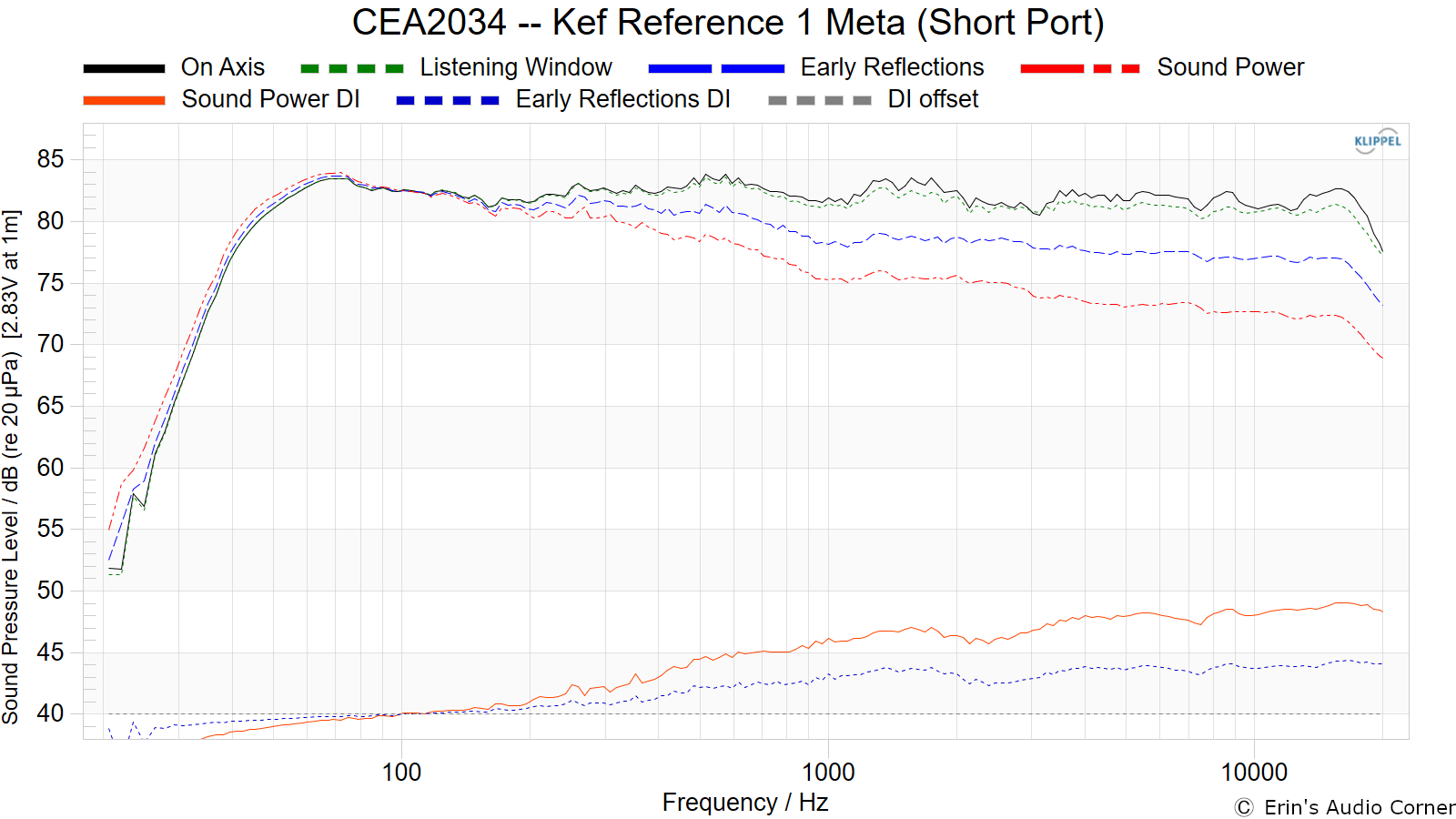
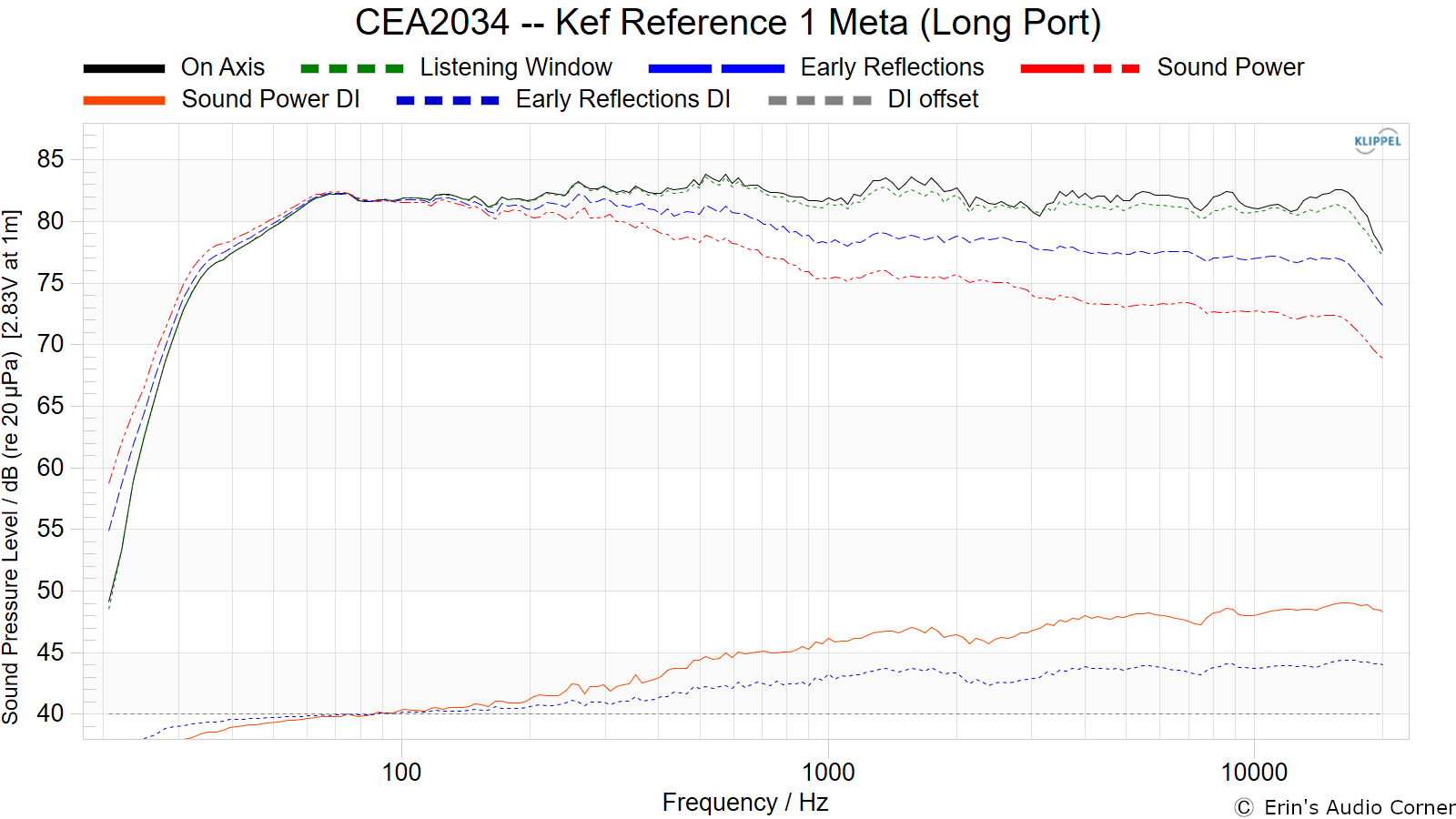
Early Reflections Breakout:
Floor bounce: average of 20º, 30º, 40º down
Ceiling bounce: average of 40º, 50º, 60º up
Front wall bounce: average of 0º, ± 10º, ± 20º, ± 30º horizontal
Side wall bounces: average of ± 40º, ± 50º, ± 60º, ± 70º, ± 80º horizontal
Rear wall bounces: average of 180º, ± 90º horizontal

Estimated In-Room Response:
In theory, with complete 360-degree anechoic data on a loudspeaker and sufficient acoustical and geometrical data on the listening room and its layout it would be possible to estimate with good precision what would be measured by an omnidirectional microphone located in the listening area of that room. By making some simplifying assumptions about the listening space, the data set described above permits a usefully accurate preview of how a given loudspeaker might perform in a typical domestic listening room. Obviously, there are no guarantees, because individual rooms can be acoustically aberrant. Sometimes rooms are excessively reflective (“live”) as happens in certain hot, humid climates, with certain styles of interior décor and in under-furnished rooms. Sometimes rooms are excessively “dead” as in other styles of décor and in some custom home theaters where acoustical treatment has been used excessively. This form of post processing is offered only as an estimate of what might happen in a domestic living space with carpet on the floor and a “normal” amount of seating, drapes and cabinetry.
For these limited circumstances it has been found that a usefully accurate Predicted In-Room (PIR) amplitude response, also known as a “room curve” is obtained by a weighted average consisting of 12 % listening window, 44 % early reflections and 44 % sound power. At very high frequencies errors can creep in because of excessive absorption, microphone directivity, and room geometry. These discrepancies are not considered to be of great importance.

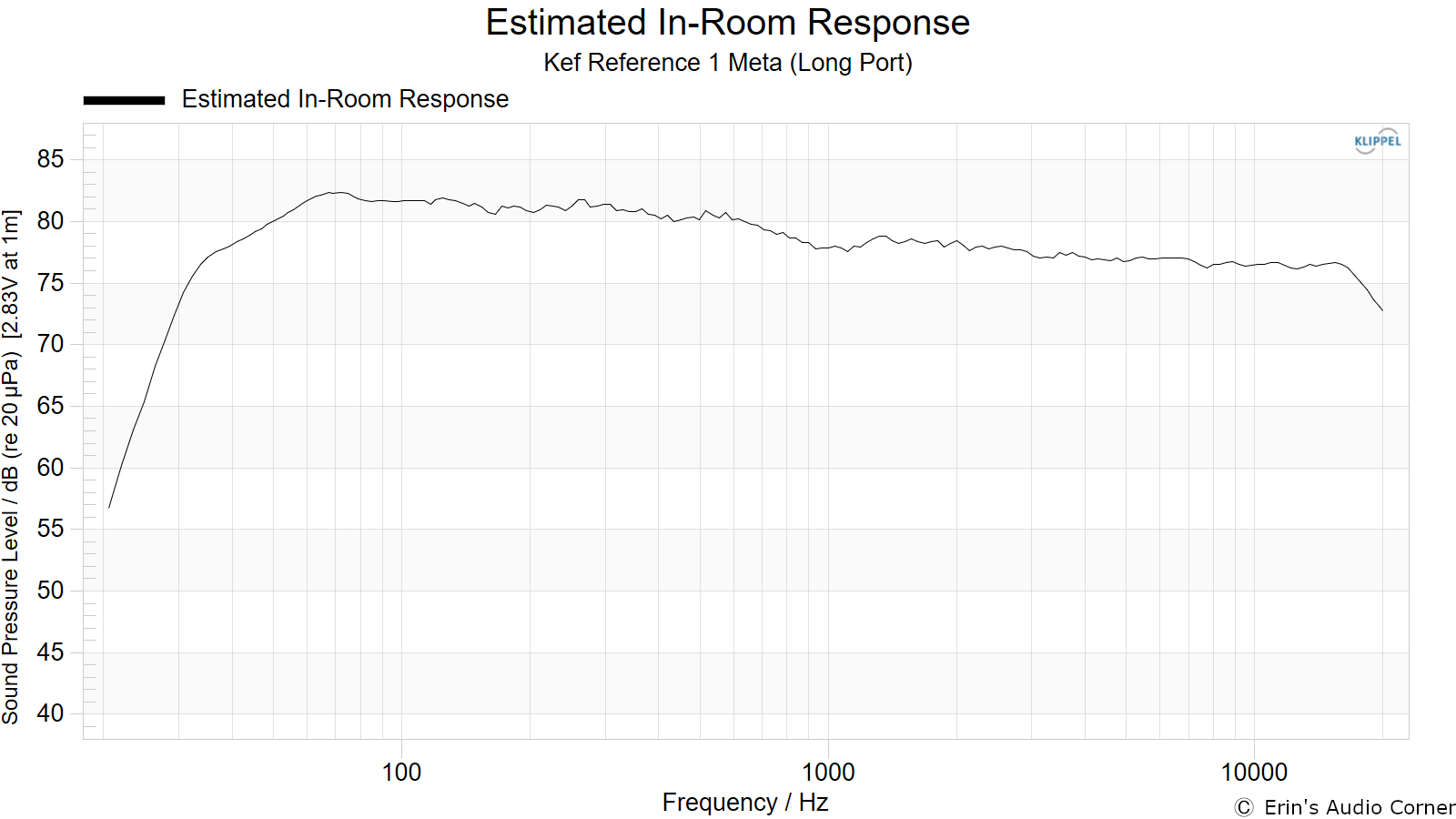
Horizontal Frequency Response (0° to ±90°):

Vertical Frequency Response (0° to ±40°):

Horizontal Contour Plot (normalized):
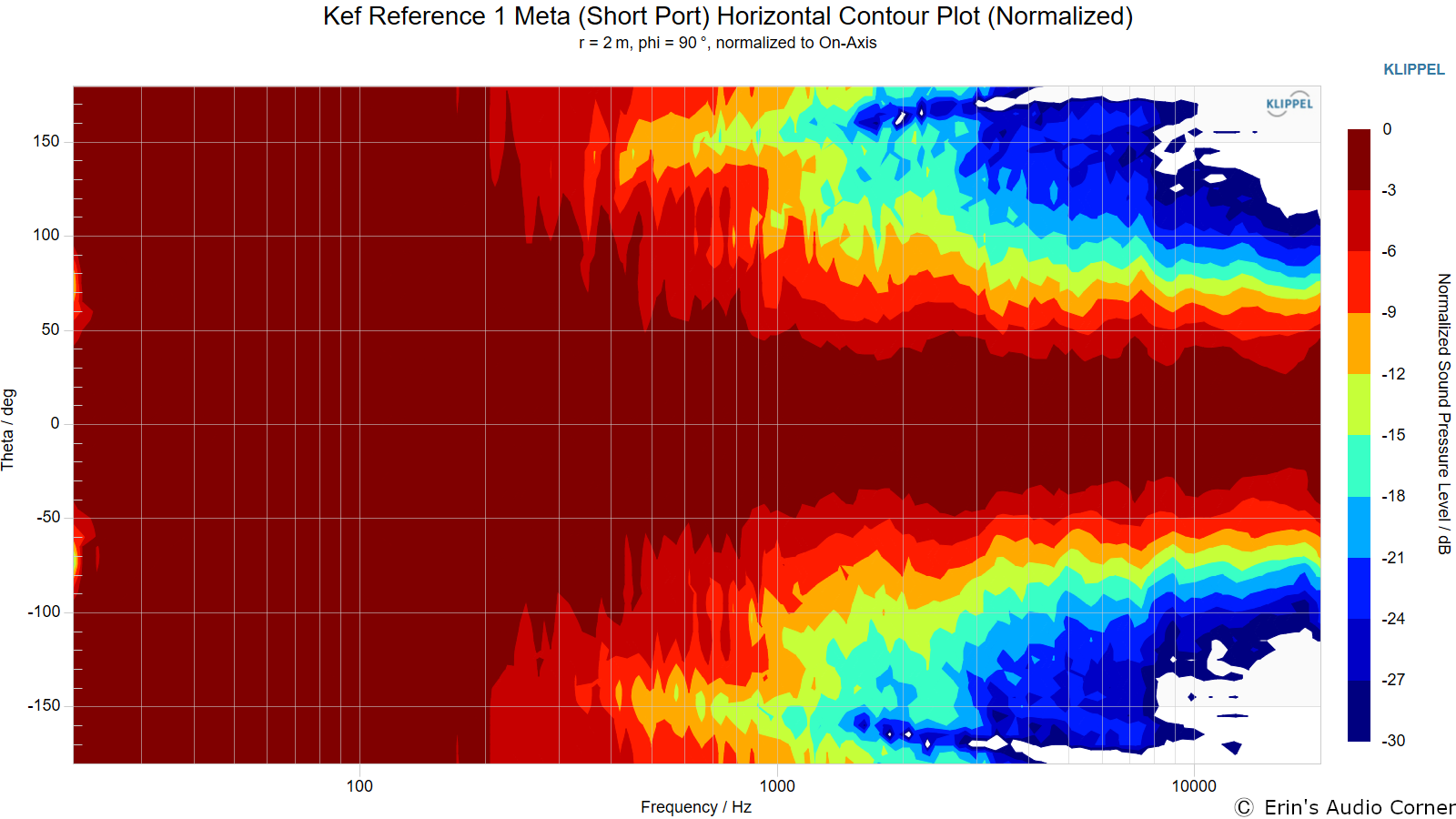
Vertical Contour Plot (normalized):
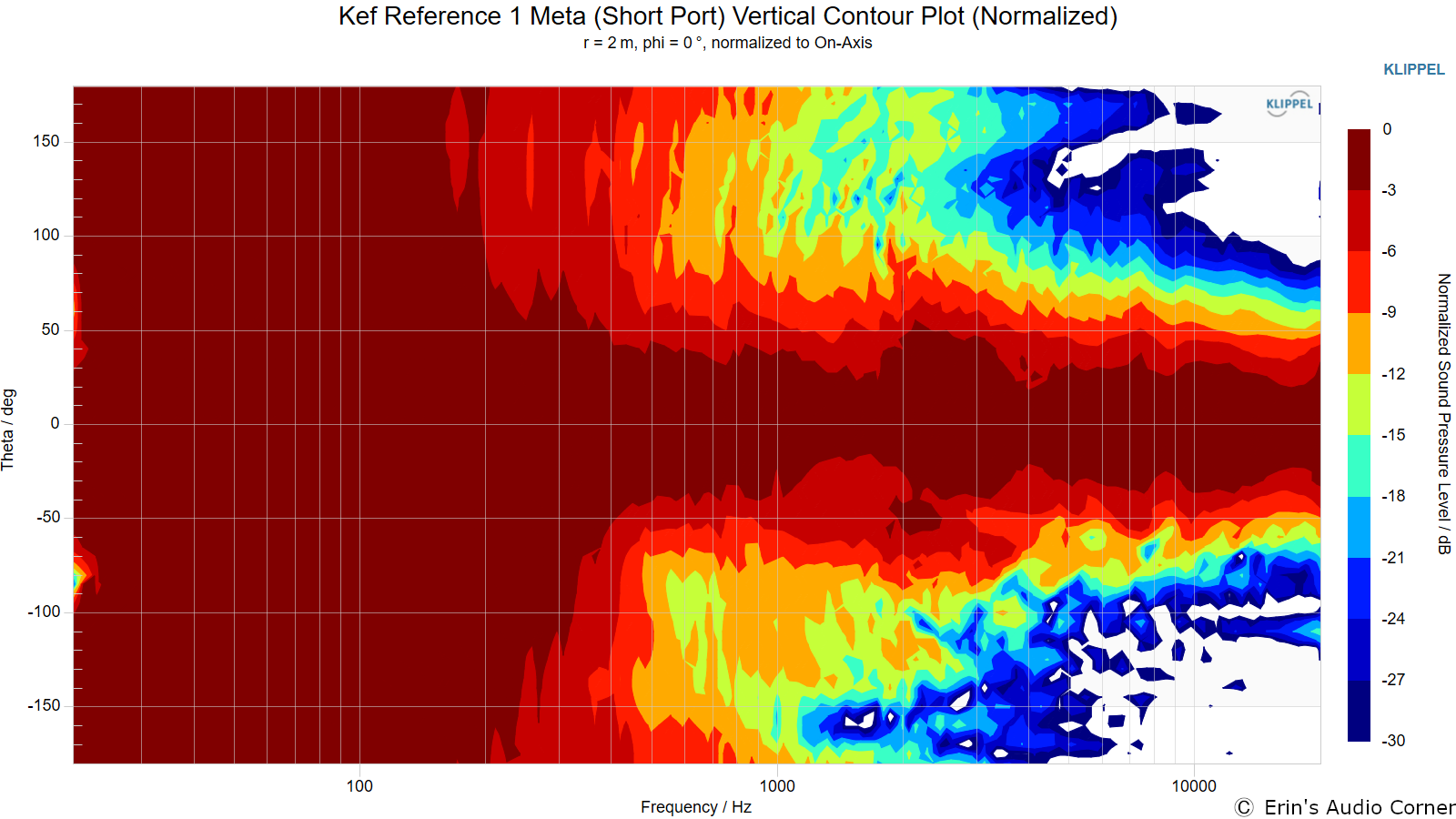
“Globe” Plots
Horizontal Polar (Globe) Plot:
This represents the sound field at 2 meters - above 200Hz - per the legend in the upper left.
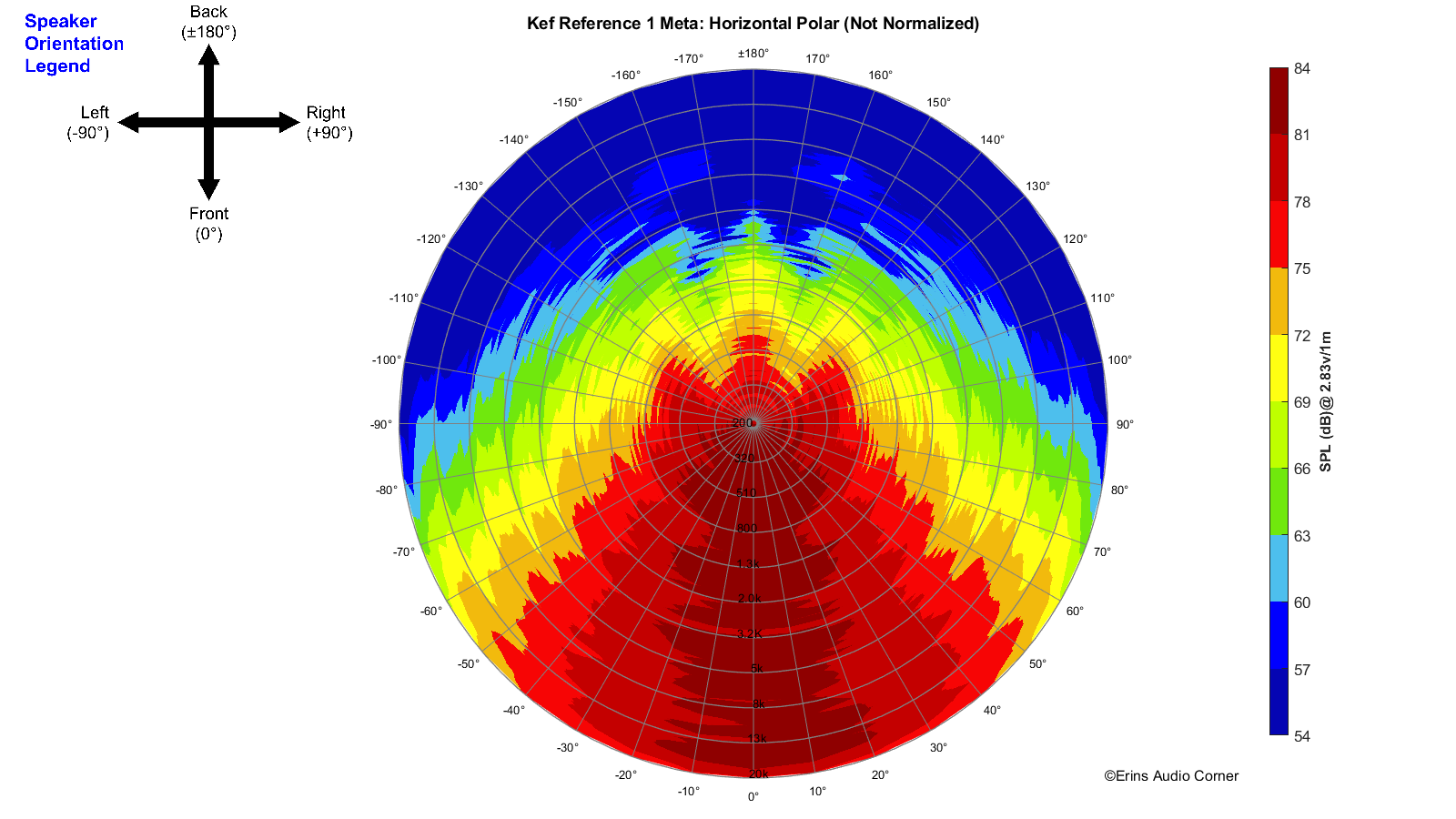
Vertical Polar (Globe) Plot:
This represents the sound field at 2 meters - above 200Hz - per the legend in the upper left.
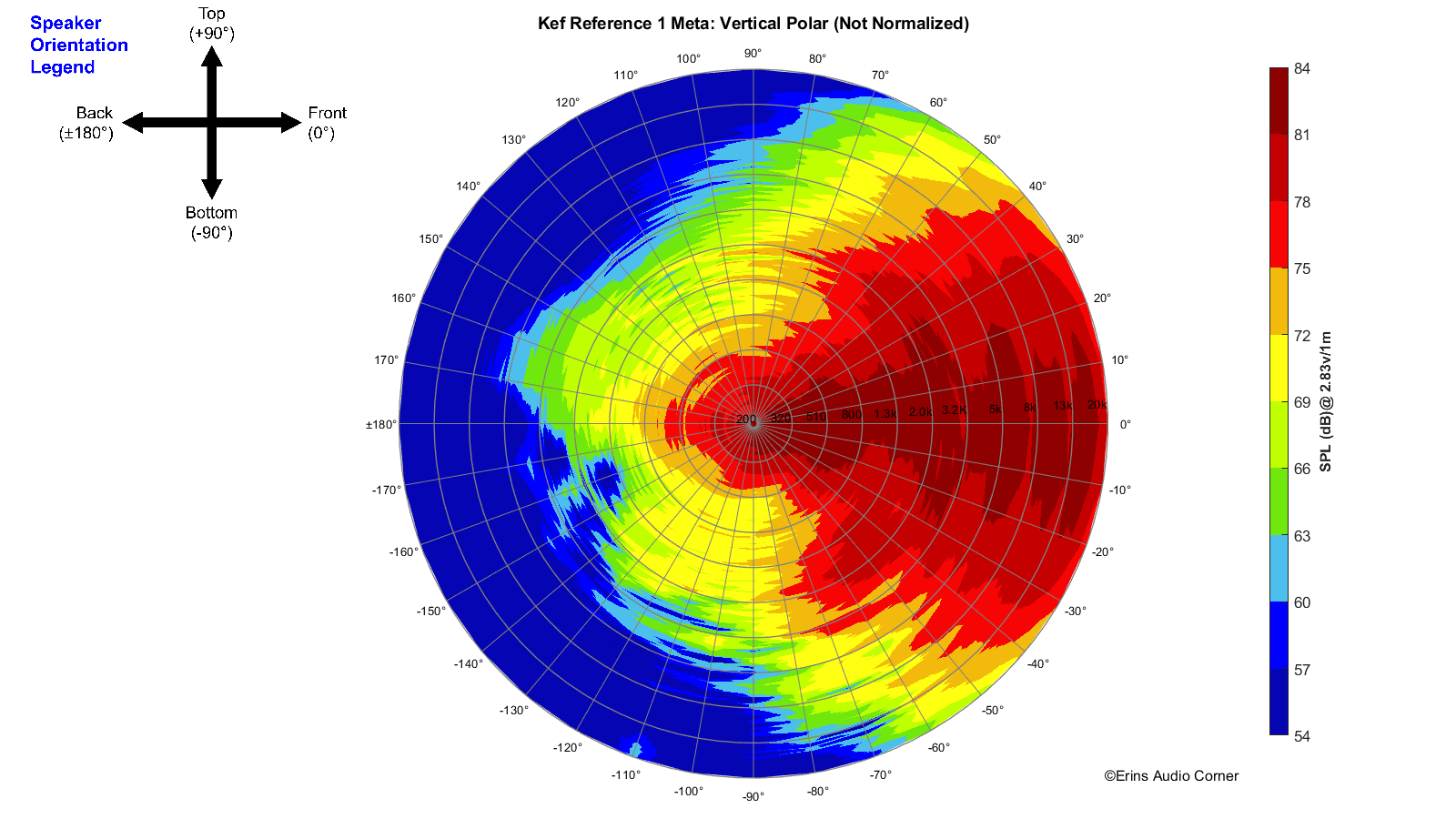
Additional Measurements
Impedance Magnitude and Phase

Response Linearity and Sensitivity

Step Response
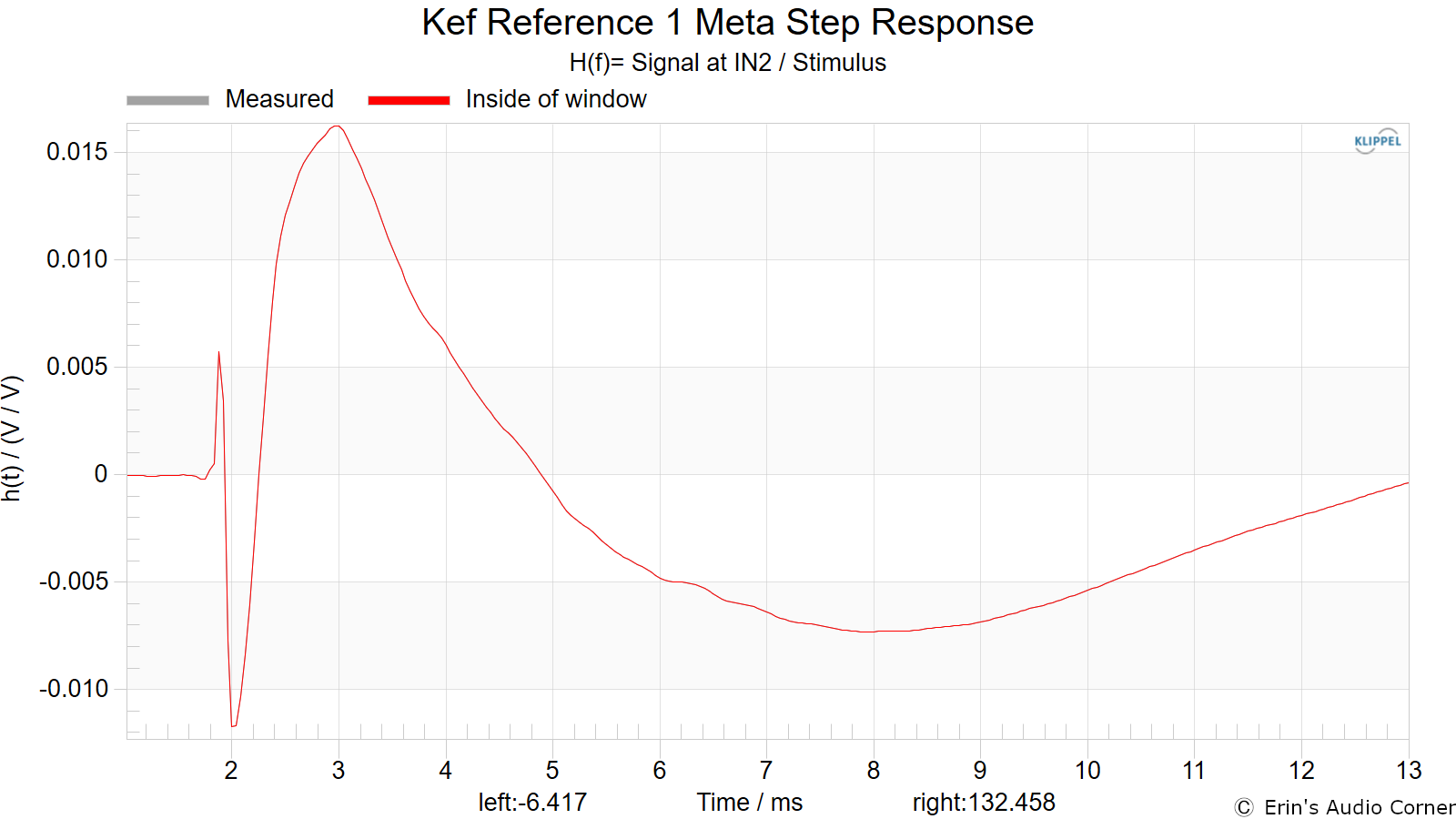
Group Delay
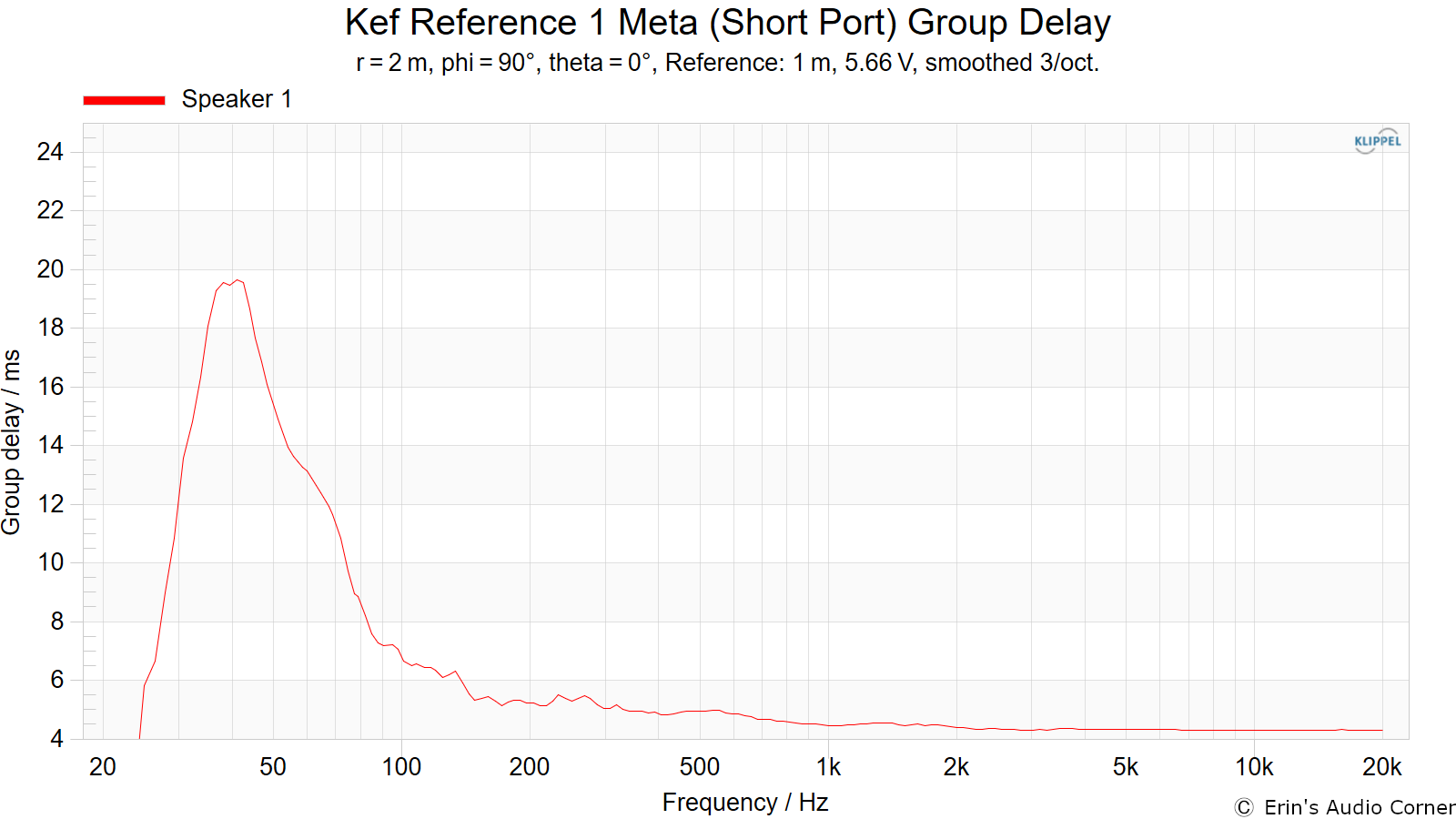
Harmonic Distortion
Harmonic Distortion at 86dB @ 1m:
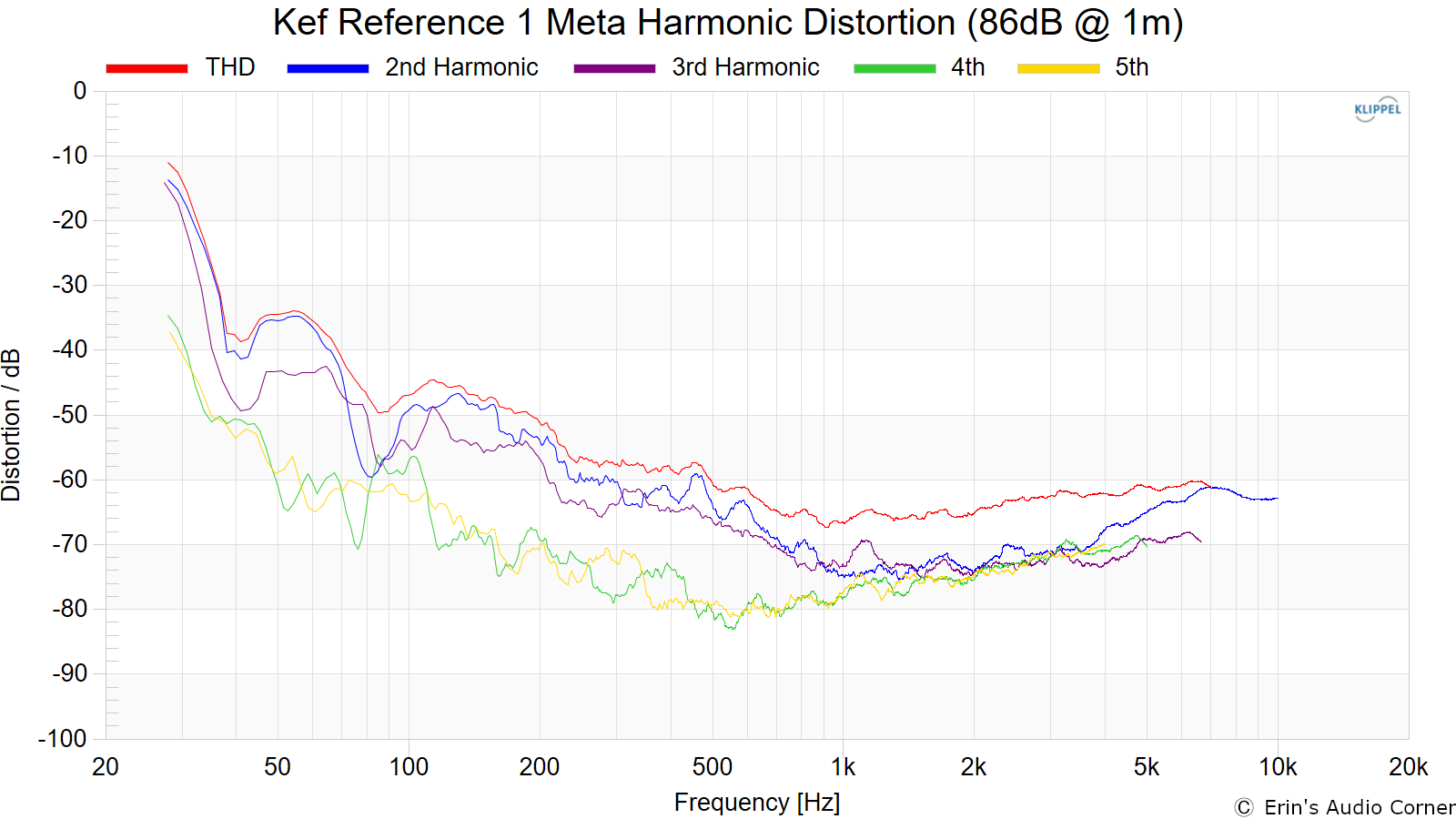
Harmonic Distortion at 96dB @ 1m:
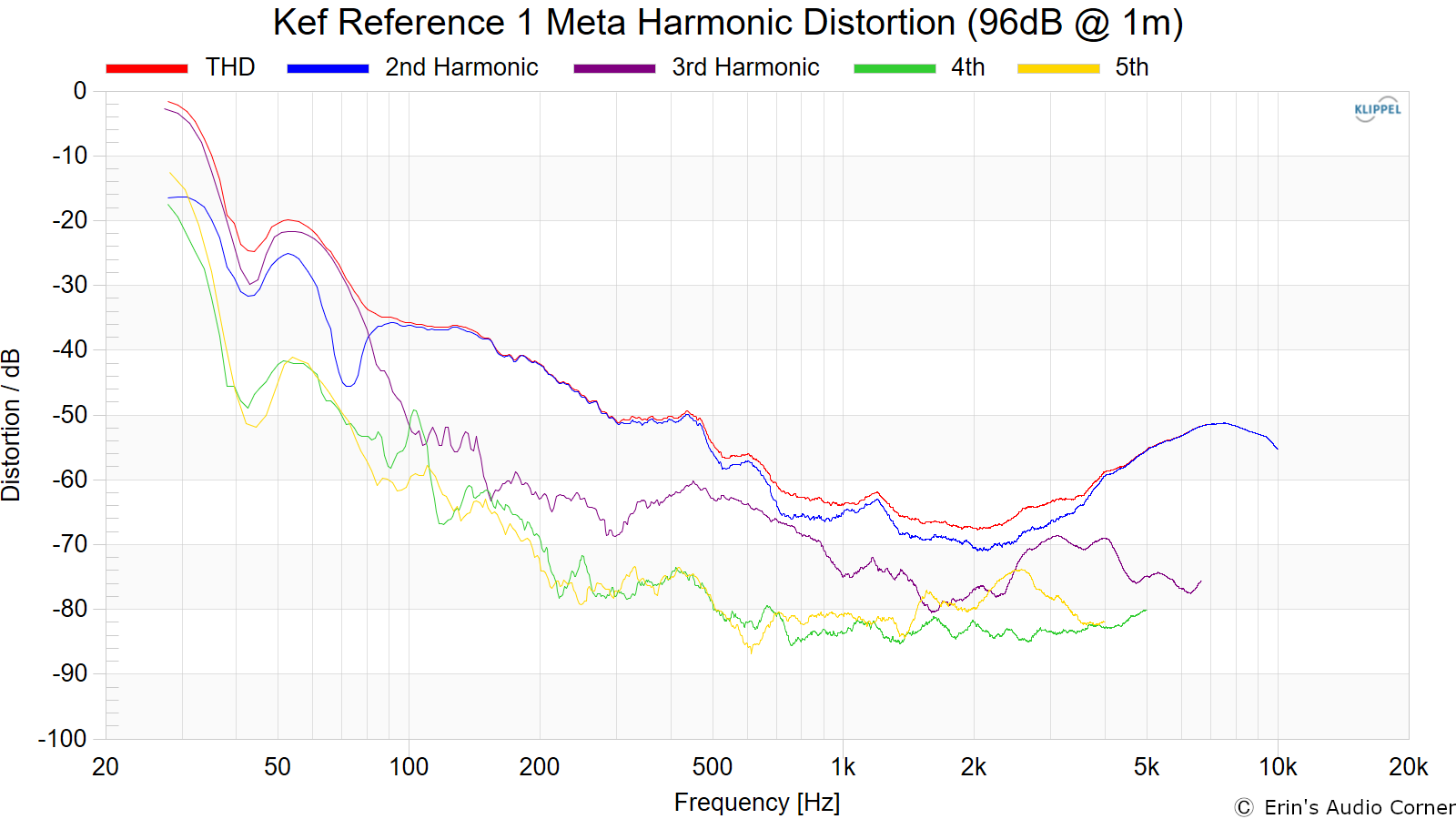
Dynamic Range (Instantaneous Compression Test)
The below graphic indicates just how much SPL is lost (compression) or gained (enhancement; usually due to distortion) when the speaker is played at higher output volumes instantly via a 2.7 second logarithmic sine sweep referenced to 76dB at 1 meter. The signals are played consecutively without any additional stimulus applied. Then normalized against the 76dB result.
The tests are conducted in this fashion:
- 76dB at 1 meter (baseline; black)
- 86dB at 1 meter (red)
- 96dB at 1 meter (blue)
- 102dB at 1 meter (purple)
The purpose of this test is to illustrate how much (if at all) the output changes as a speaker’s components temperature increases (i.e., voice coils, crossover components) instantaneously.
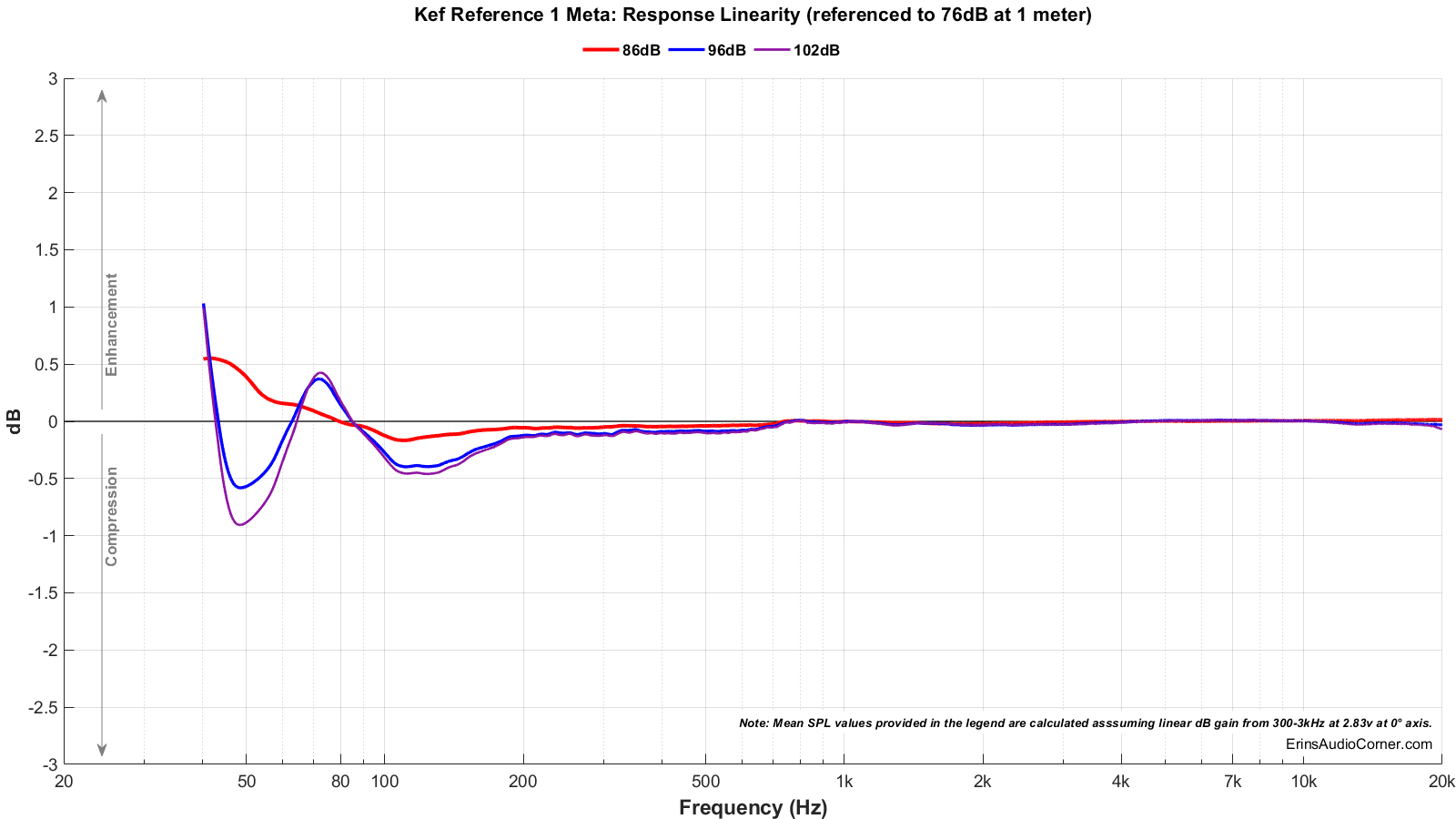
Parting / Random Thoughts
As stated in the Foreword, this written review is purposely a cliff’s notes version. No order; just some random notes from my listening. For details about the performance (objectively and subjectively) please watch the YouTube video. But a few notes:
- All listening was done in my home theater (I have a video on this here) as well as my living room (large open floor plan). Power was the Parasound HINT6.
- On-axis is surprisingly nice (expected a bit of a rise as other Kef speakers have shown in the EIR). I initially had them turned off-axis expecting the sound to be too treble heavy on-axis. Instead what I found was that the HF was too subdued. Putting the speakers practically directly on-axis was much better to me and balanced out the tonality as well as the soundstage.
- Extremely neutral. Nothing at all calls attention to itself. The cymbals and hi-hats are sharp and detailed but never shrill and there is no 5-8kHz harshness that I often hear from speakers that target that “detailed” sound (and often sound very shrill).
- One of the most 3-D soundstages I have heard to date (only beat thus far by a set of $13k monitors using a concentric driver). And to me, this is the feature that needs to be recognized. This speaker is very EQ’able so if you don’t like the highs on a song, you can tweak it to your liking. Midrange, bass, etc. But you can never correct for a speaker’s radiation pattern. In other words, you can’t make a speaker have such a 3-D soundstage if it doesn’t already have it. This speaker does. And that’s the selling point to me.
- Short port option is my favorite for sure. The speakers are away from the walls in my home theater quite a bit. The long port doesn’t sound right. But moving downstairs to my living room and putting the speakers next to the wall, the long port does seem to help keep the bass sound more balanced. Make sure to try both.
- Details in the soundstage just pop out all over the place with complex music (such as Boz Skaggs’ “Lowdown”). Phil Collins’ “I Don’t Care Anymore” has snares that travel the soundstage from left to right and it sounds fantastic on these speakers.
- The Cars “Magic” has a right side hi-hat that stands out from the soundstage while the “click clock” is back and to the left, giving it a 3-D sound field that is right in front of you at some points and deep with other parts of the mix.
- Really good low-level dynamics; great with low level listening of more bass heavy music (where high output is bass limited).
- Non-fatiguing. I listened for an hour at 75dB or so and never felt earache. I did have one session where I listened at this average level and used EQ to boost the lower bass up and just sat back and enjoyed it.
- Can get dangerously loud due to extremely low midrange distortion. Though, at about 98dB at 3.5 meters the bass starts to sound “flat”, as if I was reaching the limits of the woofers. Still, that’s an average SPL of 98dB and it’s not really sane to listen to those kinds of levels for anything other than a quick “stress test” as I did here.
- Bobby McFerrin “Don’t Worry Be Happy” starts with low vocal on left that stays parked but you can almost visualize it moving - Matrix style. :) Left snap is dynamic.
- Turning speaker off-axis about 10° provides a bit wider soundstage with no obvious detriment to the focus of images in the soundstage. Though, the HF is lost and may need to be boosted a bit (depending on your preference). I would encourage you to play around with the aiming though don’t be surprised if you find you like directly on-axis.
- Good, solid kick in Depeche Mode’s “Enjoy The Silence”.
- My only gripe here is that the radiation pattern isn’t quite as wide as I’d like it to be. Though, at about ±50° it is wider than the R3 (~±40°) according to the data and I didn’t find any serious complaints to be had.
Notice how around 3kHz the DI flattens out. Normally, with a flat on-axis speaker, I’d have a problem with this as it would result in a shelved up top end (bright sounding) with a wider radiation pattern - and I would personally put this right on the edge of “narrow/wide”, using ±50° as my mark). However, it’s interesting to note that the on-axis response is slightly tilted downward by about 1dB from around 3kHz to 10kHz. I believe this combination is what is causing such a smooth in-room response and the speakers not coming across as “bright” to my ears, even when listening directly on-axis.
Awesome speakers. Subwoofer is optional. For most music and at reasonable volume, with the F3 of about 45Hz and the in-room response extending lower, you might be OK without a subwoofer. But if you tend to listen at high levels (or are just very far away) then a subwoofer might be necessary. Hard for me to say for sure as this is more of a preference/personal thing and these speakers do a good job of getting reasonably low so I can’t say the subwoofer is a “must” like I do with other speakers with a much higher roll off point.
Support the Cause
If you find this review helpful and want to help support the cause there are a few ways you can do so below. Your support helps me pay for new items to test, hardware, miscellaneous items needed for testing and costs of the site’s server space and bandwidth. Any help is very much appreciated.
Join my Patreon: Become a Patron!
Or using my product affiliate link below to buy anything they sell that you want to try out. This will earn me a small commission at no additional cost to you. You can use these links anytime, now or in the future.
You can also join my Facebook and YouTube pages if you’d like to follow along with updates.